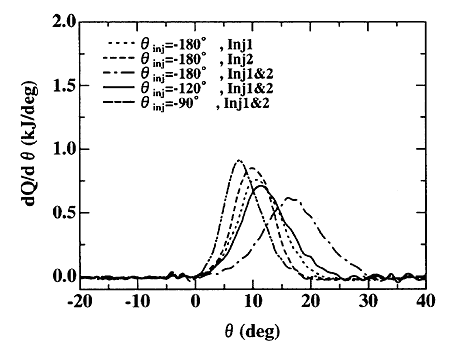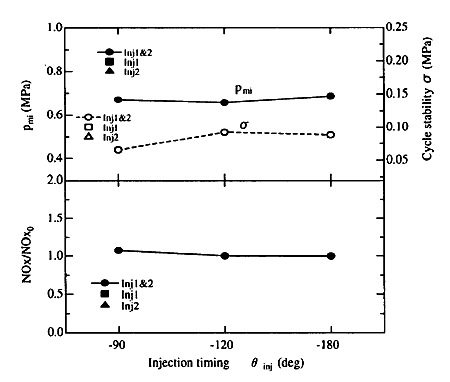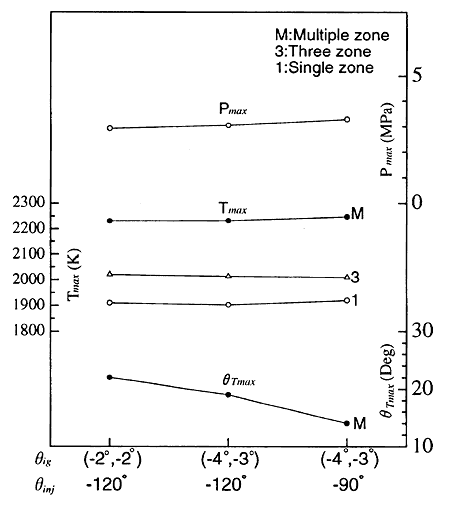Fig.12 shows the change of the heat release process when the injection timing is altered, keeping the same ignition timings. A numerous type of the heat release process was obtained. In Fig.13, comparisons of the performances for the change in the injection timings are plotted. Depending on the extent of stratification in fuel jet, the respective combustion efficiency may change. Thus the performances do not appreciably change. Since the ignition is made at the relatively rich concentration region in the case of the retarded injection, the cycle stability seems to be improved.
For more comprehensive analysis of the cycle, discussions are made using the cycle simulation model so far described above.

Fig.12 Change of heat release with injection timing

Fig.13 Change of cycle performance with heat release processes in Fig.12
6.ESTIMATION OF THE CYCLE PERFORMANCE
6-1. Comparison of the Cycle for the Respective 3 Models
In order to confirm the experimental results discussed above from a viewpoint of the simulation, by making use of the several experimental conditions appeared in Fig.11 and 12. Comparisons are made for the cases of changing in the ignition timing and/or the injection timing. Results are shown in Fig.14. In these calculations, the experimental heat release rate is applied for each calculation. The maximum combustion pressures do not appreciably change in 3 cases as expected from the experiments. The maximum temperature in the burnt zone is almost the same in each case. The tendency is similar irrespective of models though the zone temperature exhibits highest for the multi-zone model. According to the experimental results, however, NOx emission increased in the case of the advanced injection and the retard ignition as seen from Fig.10 and 11. The bottom curve in Fig.14 indicates the crank angle at which the maximum temperature appears in the case of the multi-zone model. From the figure, the deference in the crank angles at the maximum temperatures in respective case is clearly seen. As the crank angle approaches TDC, the burnt gas experiences a high temperature for longer time. This may results in the increased NOx emission.

Fig.14 Calculated results for various combinations of injection and ignition timings
Fig.15 shows the comparison between the premixed case and the injected case. The respective heat release rate is shown in Fig.16. The experimental performance is summarized in Table 2. In the case of the premixed combustion, the heat release exhibits the high rate in the later stage of combustion, and results in the considerably reduced NOx emission compared with the direct injection. The reason can reasonably be illustrated from the results of calculation in Fig.15. As compared with the direct injection, the maximum temperature in the cycle is reduced by about 200℃, and the crank angle which gives the maximum temperature also retards by about 10°CA. Both may cause the reduced NOx emission.
BACK CONTENTS NEXT